Need to diversify your online advertising? Wondering how to leverage Google's entire ecosystem to reach more people?
In this article, you’ll discover how to get started with the Google Performance Max ads solution.
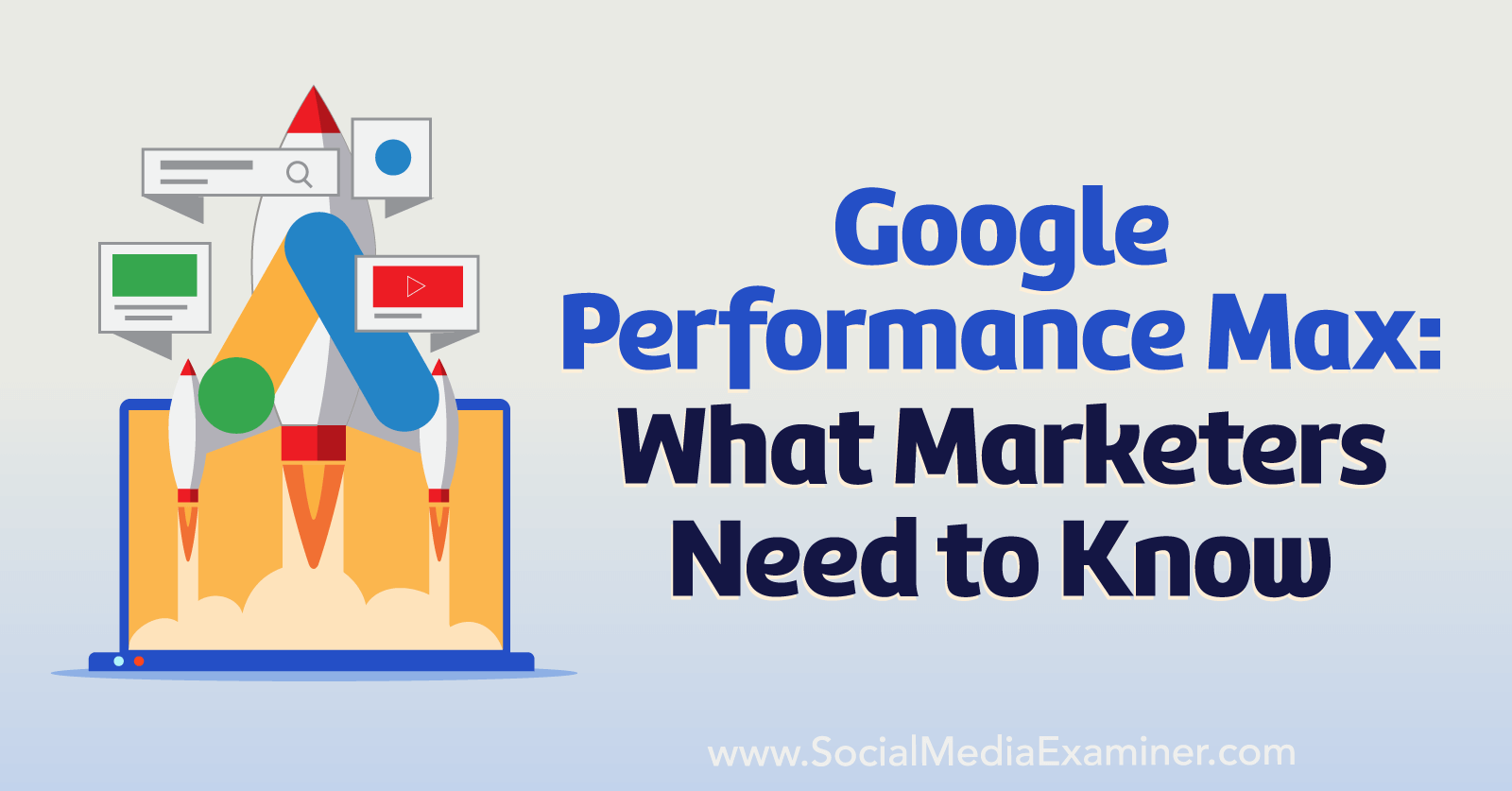
What Is Google Performance Max?
Google Performance Max is a new campaign type from Google Ads. It’s a major update because it combines machine learning with multiple ad types.
In the past, Google's advertising channels had lots of separate campaign types: search ads, shopping ads, display ads, discovery ads, and local ads. Performance Max can potentially work with all of those formats in one Performance Max campaign. It uses machine learning to decide which placements work best for your campaign as it goes along.
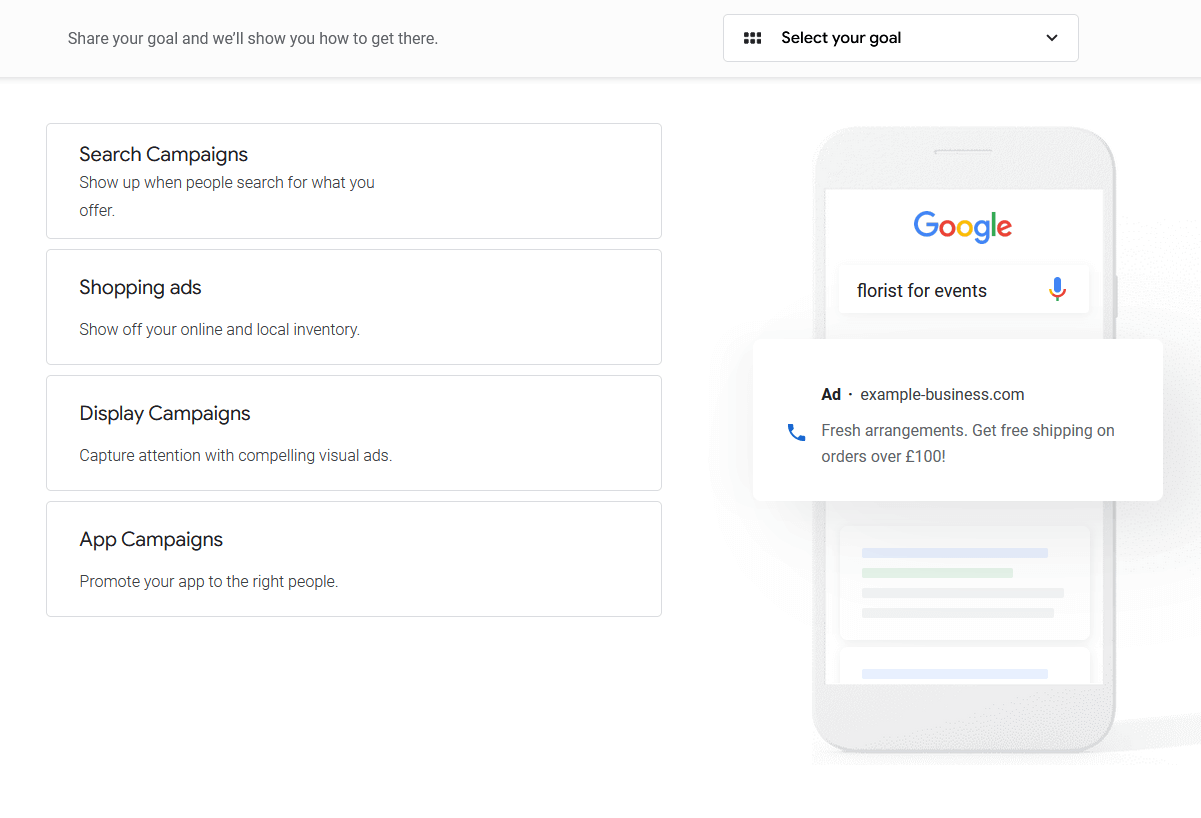
Let’s break down those categories a bit to show you just how much Performance Max covers.
- Search and shopping ads include text ads and ad banners in search results.
- Display ads appear all over the internet for users who don’t have ad blockers.
- Discovery ads include high-traffic placements such as YouTube, the Google mobile app, and Gmail.
- Local ads include placements such as Google Maps, which can be invaluable for businesses with a physical presence that run local campaigns.
In case it wasn’t already obvious from that list, Google’s ad network is colossal. The Display network alone covers about 80% of the internet.
But there’s one fatal flaw in the existing ad system: it’s complex, confusing, and not especially user-friendly.
Performance Max aims to change that. As well as offering a wide range of placements, it’s very simple. All you have to do is set up the bidding, creative assets, and audience signals, and then let the algorithms do the rest.
So far, so good. But why is Google coming out with Performance Max now?
The ad giant is actually feeling some pressure.
First off, Meta has become a serious competitor. Like Google, Meta covers a lot of online real estate, especially Instagram and Facebook. And it offers a much simpler user interface for marketers. Performance Max aims to give marketers the same breadth and ease in setting up campaigns.
Google also has unsold ad inventory that it wants to use. Ad spaces are going unused on YouTube and in the Display network, even though those placements get a lot of traffic and are a real opportunity for marketers. Google wants to make it easier for marketers to use that opportunity and keep its ad slots full.
Finally, Performance Max is a chance for Google to keep training its machine learning algorithms. When you use this campaign option, you’re helping to educate the system on what makes an effective ad. So the more you use it, the better it gets.
What Google Performance Max Campaigns Mean for Social Marketers
You might be wondering why we’re talking about this on Social Media Examiner. Google hasn’t been social since Google+… or has it?
Get World-Class Marketing Training — All Year Long!
Are you facing doubt, uncertainty, or overwhelm? The Social Media Marketing Society can help.
Each month, you’ll receive training from trusted marketing experts, covering everything from AI to organic social marketing. When you join, you’ll also get immediate access to:
- A library of 100+ marketing trainings
- A community of like-minded marketers
- Monthly online community meetups
- Relevant news and trends updates
There’s less of a difference between Google ads campaigns and social marketing than you might think. The formats have become more similar in style; for example, you can now create display ads with photo carousels just like Instagram sponsored posts.
Search and social ads are also closely connected on the buyer’s journey. Imagine you see a product advertised on Instagram a few times. You don’t tap on it but the brand name stays in your mind. When you decide you want that product a few weeks later, where do you go?
For most people, the answer is Google. While social media might be the first touchpoint on the buyer’s journey, it often ends with a conversion from Google.
Social marketers need to use Google as part of a holistic ad mix. Performance Max makes that easier to do than ever before because you only have to set up one ad campaign to cover the whole Google network.
Another major selling point for Performance Max is that it’s genuinely good at discovering new customers and new markets. Many direct-to-consumer brands have already found that they attract more first-time customers with Performance Max than with shopping ads alone.
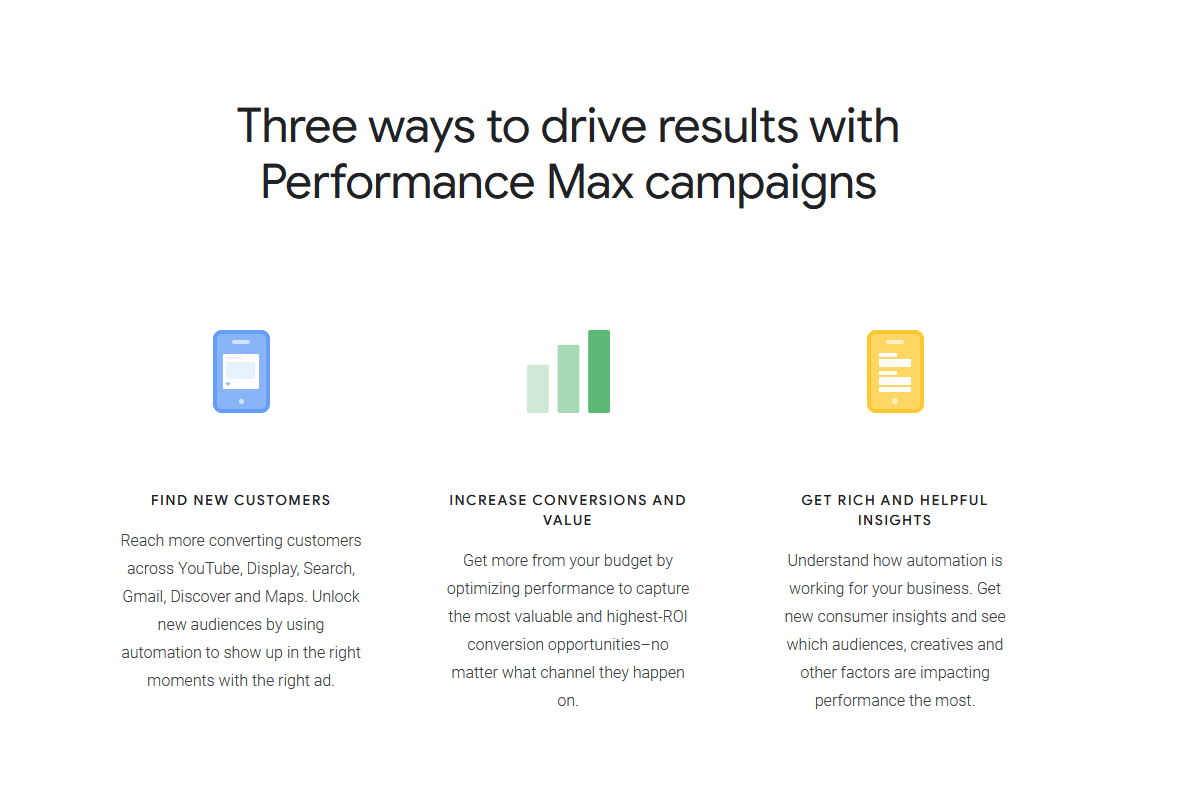
Google Performance Max campaigns won’t be the perfect fit for every brand but if you:
- Market to customers across multiple social networks and platforms…
- Are focused on making eCommerce sales…
- And/or want to be able to scale ad campaigns up and down quickly…
… then it’s worth giving Performance Max a try to maximize campaign performance.
How to Use Google Performance Max
Getting started with Google Performance Max is easy. It’s listed with all of the other campaign types when you create a new campaign in your Google Ads account.
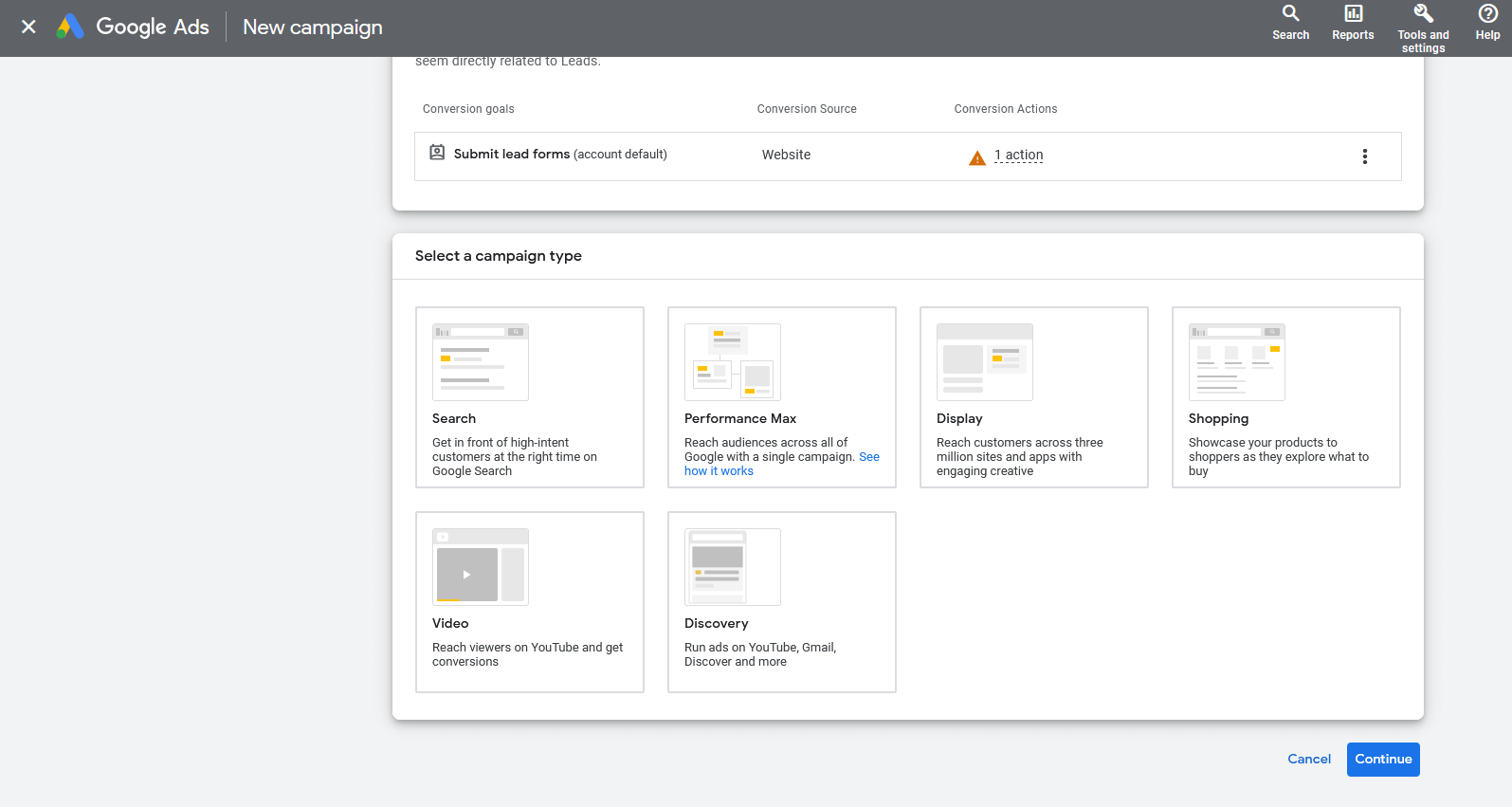
Before you dive in, there are a few things you need to know.
In this section, we’ll look at the essentials of working with Performance Max:
- Bidding
- Creative assets
- Audience signals
- Conversion tracking
- Insights
#1: Bidding
Performance Max exclusively uses smart bidding. That means you can set your budget and goals, and then the platform does the rest. You don’t have any more fine-grained control over your ad bids than that.
You have a choice of four different bid goals:
- Maximize conversions. This is as simple as it sounds: get the most conversions you can from your budget.
- Maximize conversions at target cost per acquisition/conversion. With this goal, you aim to get maximum conversions while sticking to a target cost. Note that Performance Max will optimize toward your target cost, but it isn’t guaranteed to reach the target.
- Maximize conversion value. Instead of the number of conversions, this goal aims for high-value customer acquisition, even if that means fewer conversions overall. This is a strong choice if you’re selling physical goods or have a very clear idea of the value of a lead magnet.
- Maximize conversion value at target return on ad spend. Like maximizing conversion value, this goal focuses on ultimate value over the number of conversions. But it includes a target return on ad spend to keep your bids within limits.
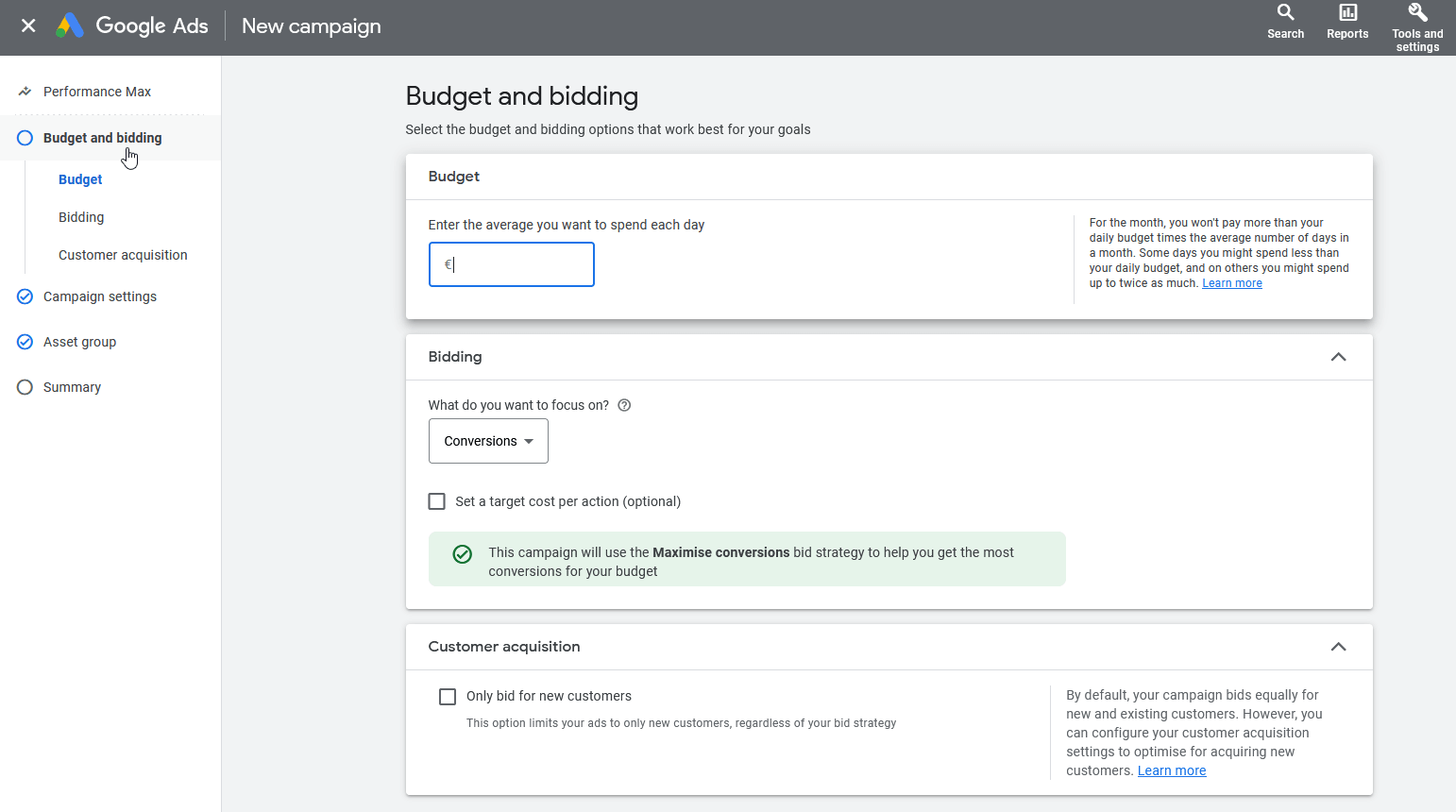
#2: Creative Assets
Creative assets are the only part of Performance Max where Google can’t do the work for you. You’ll need high-quality images, videos, and copy for headlines and descriptions to make the most of your ad placements and budget.
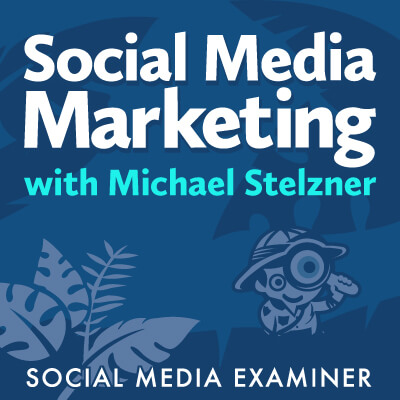
Discover Proven Marketing Strategies and Tips
Want to go even deeper with your marketing? Check out the Social Media Marketing Podcast! Publishing weekly since 2012, the Social Media Marketing Podcast helps you navigate the constantly changing marketing jungle, with expert interviews from marketing pros.
But don’t let the name fool you. This show is about a lot more than just social media marketing. With over 600 episodes and millions of downloads each year, this show has been a trusted source for marketers for well over a decade.
- Images. Performance Max requires you to use at least a few images; however, you don’t need to overdo it. Three to five images will be enough for the algorithm to work with while giving you statistically significant results about which images are most successful. Try to include a range of image styles such as showing products in close-up and context.
- Video. Optimize your video assets based on where they’re likely to appear. Most of the time, that means YouTube ads. Videos should be 30 seconds or longer and show products in action, as well as social proof and a call to action. If you don’t have flawless videos, it’s still worth uploading something just to prevent Google from auto-generating videos for you.
- Headline and description copy. You’ll need both long and short versions of the copy to use in search ad placements (which suit longer headlines and descriptions) and display ads (which tend to be very short).
In Performance Max, you store the creative assets for the campaign in “asset groups.” This means that you can link specific assets to specific audience signals and keep relevant assets together. Make sure that each group has a clear theme and all of the visual and text assets are a good fit.
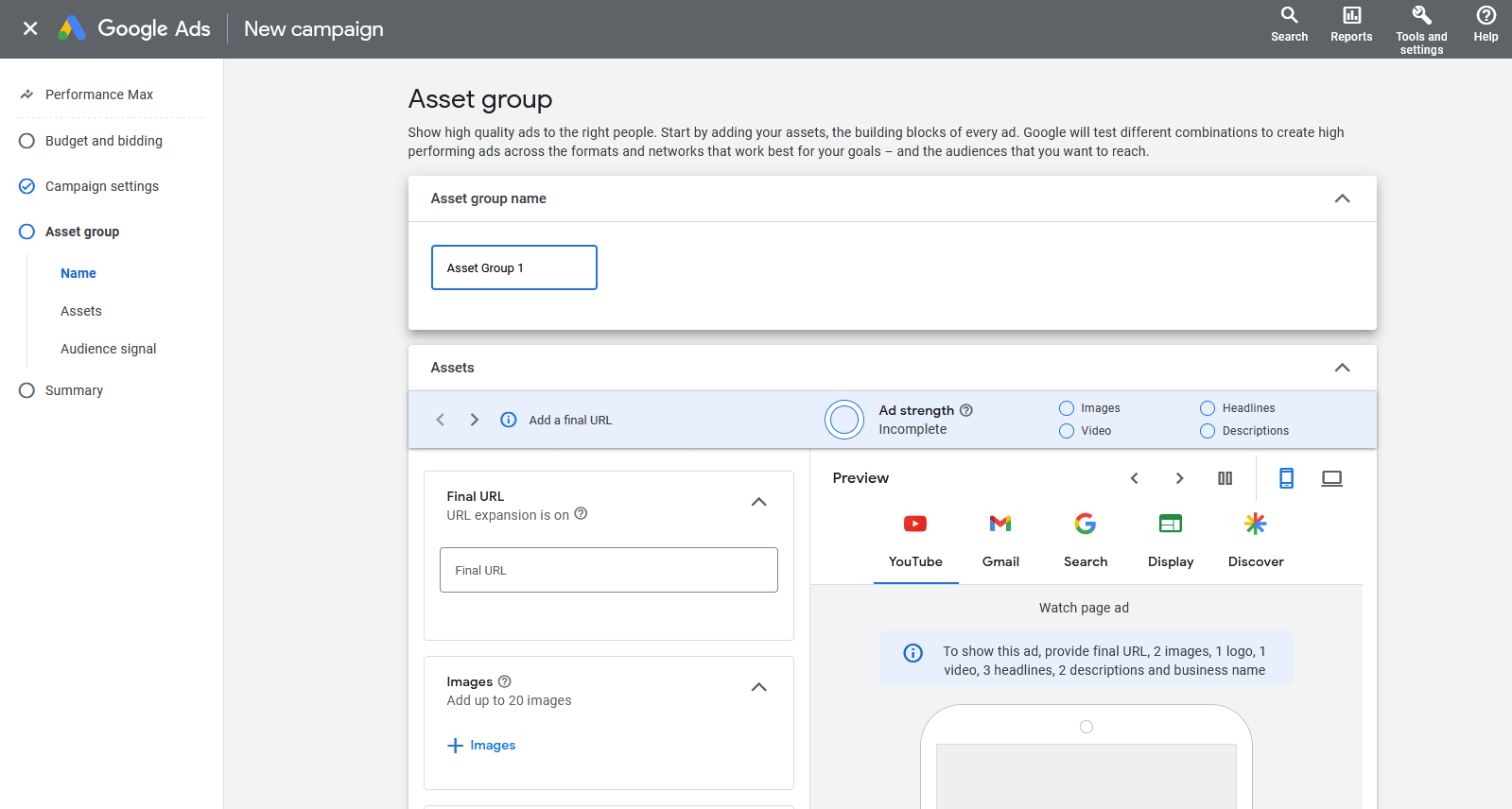
#3: Audience Signals
If you’re used to creating ads for social networks, this is where you’ll find things a bit different.
For example, on Meta’s ad network, you can define specific audiences that will see your ads.
In Performance Max, you define “audience signals” that the platform uses to find similar audiences. This is part of why Performance Max is so good at finding new customers because it goes beyond a defined audience.
So what audience signals can you share?
When you set up a campaign, you can create multiple audiences, each with multiple data sources and signals. The more data you can provide, the better.
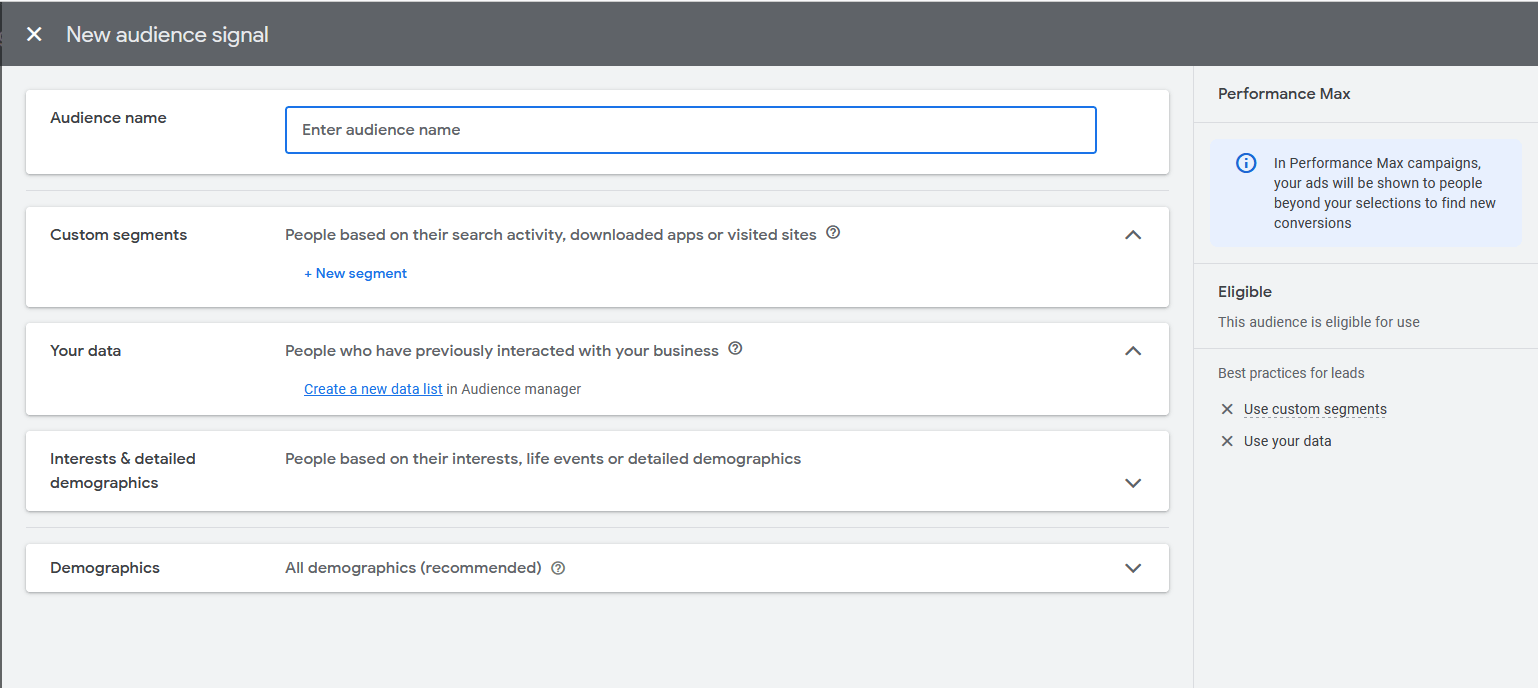
Here’s what Google recommends using as data signals:
- At least one data source from existing customers. For example, this could be a list of email subscribers, a list of buyers from Google Ads, or a remarketing list from Google Analytics.
- Custom segment sounding, where you use Google searches as audience signals. You can set up a keyword list of searches and Performance Max will target people who use those or similar search terms.
- If you’re advertising a new brand that doesn’t have much customer data yet, you could add a list of all website visitors. Because your business is small, any website visitors are likely to be direct leads so this data signal is still valuable.
And what if you have no customer or web data at all? In that case, it’s better not to add any data signals. You don’t have to provide any and Performance Max will work better with no data than with bad data.
There are other ways to target your audience, too. You can target or restrict campaigns by region. You can also add negative keywords if you don’t want Performance Max to accidentally interfere with one of your other ad campaigns. However, this is a fairly advanced use case and it’s easier to speak to a Google rep than to set up negative keywords on your own.
#4: Conversion Tracking
Performance Max is a smart, automation and machine learning–based product. That means it needs data to work. In fact, you can’t set up a Performance Max campaign at all unless you set a conversion goal.
To track conversions and feed in data, you’ll need the Google conversion code set up on your website. This is broadly similar to the Facebook pixel—a small piece of code that sits on your website or app and records conversion data.
Bear in mind that Google is changing how it collects and processes analytics. In 2023, Universal Analytics is set to be replaced by Google Analytics 4. It’s a good idea to set up GA4 on your website and in Tag Manager now so you have plenty of data recorded before Universal disappears for good.
#5: Insights
No ad campaign is complete with analytics and insights. You need data to see what works, what doesn’t, and what you can improve.
This is where Google ads Performance Max has some weaknesses. Because it’s a “black box” product, where the algorithm takes care of everything, you don’t really get to see how the sausage is made.
You can view conversions, conversion value, clicks, and cost per click at a campaign level. But remember, this is a campaign that includes seven different kinds of Google ad. You can’t separate the data to see which of those ad types is performing best for you.
Google will give you information about how well specific creative assets are doing. Each one will be rated poor, average, good, or best. You can use that data to pause some assets and update others.
It also gives you a breakdown of whether conversions come from new or returning customers. This is a really useful way to check which assets work for which audiences. You’re also likely to find that Performance Max is discovering new customers more effectively than classic campaign types.
For both asset and conversion data, it will take time to gather meaningful information. Remember, your budget is spread across multiple channels so it will take longer to collect statistically significant data than if you were running a campaign on a single channel. You can expect to wait anywhere between 2 and 6 weeks before you get useful information.
With time and persistence, you can get extremely good results from Performance Max. If you have the right assets, audience signals, and clear goals, the campaign will do all the rest for you.
Brett Curry is the CEO of OMG Commerce, an agency that specializes in Google Ads, Amazon Ads, and email marketing. He's also the host of the eCommerce Evolution and Spicy Curry podcasts. Find him on Twitter @BrettCurryand on LinkedIn @thebrettcurry.
Other Notes From This Episode
- Check out the Google Performance Max Guide from OMG Commerce.
- Connect with Michael Stelzner @Stelzner on Instagram and @Mike_Stelzner on Twitter.
- Watch this interview and other exclusive content from Social Media Examiner on YouTube.
Listen to the Podcast Now
This article is sourced from the Social Media Marketing Podcast, a top marketing podcast. Listen or subscribe below.
Where to subscribe: Apple Podcasts | Spotify | YouTube Music | YouTube | Amazon Music | RSS
✋🏽 If you enjoyed this episode of the Social Media Marketing podcast, please head over to Apple Podcasts, leave a rating, write a review, and subscribe.
Stay Up-to-Date: Get New Marketing Articles Delivered to You!
Don't miss out on upcoming social media marketing insights and strategies! Sign up to receive notifications when we publish new articles on Social Media Examiner. Our expertly crafted content will help you stay ahead of the curve and drive results for your business. Click the link below to sign up now and receive our annual report!
Attention Agency Owners, Brand Marketers, and Consultants

Introducing the Marketing Agency Show–our newest podcast designed to explore the struggles of agency marketers.
Join show host and agency owner, Brooke Sellas, as she interviews agency marketers and digs deep into their biggest challenges. Explore topics like navigating rough economic times, leveraging AI, service diversification, client acquisition, and much more.
Just pull up your favorite podcast app, search for Marketing Agency Show and start listening. Or click the button below for more information.

